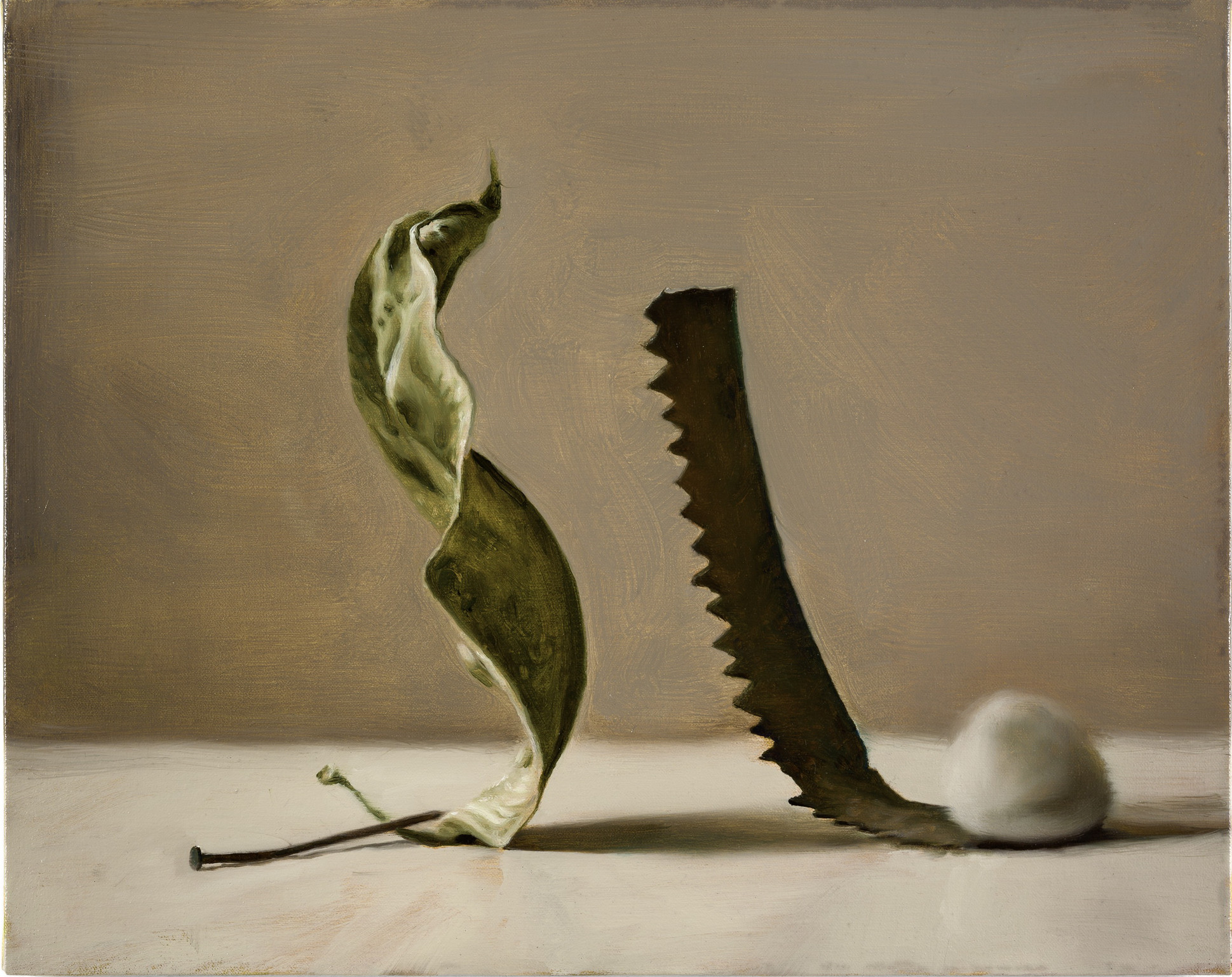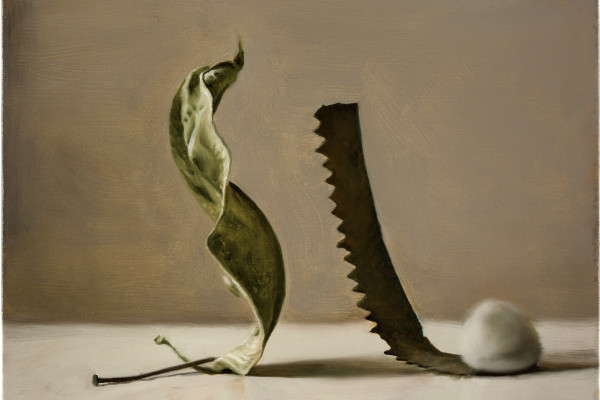Manuele Cerutti
Manuele Cerutti uses painting as a privileged tool for his research, experimenting with its expressive possibilities and technical constraints through a profound knowledge of tradition and developing his own personal discourse. Far from the frenzy of the rhythms of contemporary society, from the speed of multimedia and digital images, Manuele Cerutti lingers in the long and dilated times typical of a certain painting that allow a reflection on looking and on the pictorial vision. The solitary work in the studio consists of meticulous research, second thoughts, attention to the choice of colors, to the variations in natural light during the day, revealing an affinity with the meticulous and meditative approach of a great Italian master of the twentieth century such as Giorgio Morandi: barely evoked however and immediately contradicted because Cerutti's research does not look so much at the interiority of the object as at its reaching out towards other objects including the observer. From the intimacy of his study, Manuele Cerutti's work opens up to a universal investigation into reality by asking questions about the identity and transformation of the things that surround us. His research focuses around small objects that he possesses, tiny woods, minerals, fragments of animal bones found along mountain paths, which, abstracted from their context, are painted on the canvas. The plasticity, the physical, almost sculptural presence of the objects emerges forcefully from backgrounds of neutral shades of grey, burnt earth brown, ochre, without a precise space-time location. The paintings offer suspended visions, unexpected relationships, spontaneous synergies that exist between things regardless of their nature and matter in a perspective of relationality of objects: an iron nail stands vertically and curves almost imperceptibly towards a cup; a doorknob and a small round-topped bone flank each other; a canvas leans at an angle to the corner of a wall. The titles of the works suggest a work that proceeds slowly, a profound mental reworking by the artist who, through personal memories, emotional states, literary and philosophical suggestions, perceives the encounter between the objects that attract each other in a dialogue of shapes and of compositions. His pictorial work fits into a circularity of gazes between the subject who looks and the observed object, pausing in the work of art to grasp the continuous flow of things, the messages they send, the passage of visions that derive from it, the exchange of relations that constitute reality. In the chaotic confusion of the contemporary imagination, the artist creates an interval of contemplation and listening, and invites the viewer to participate in this moment through his personal encounter with the work.

